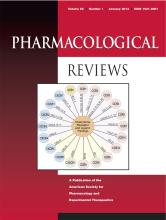Abstract
Approximately 25 years have passed since the first publication suggesting the Flinders sensitive line (FSL) rat as an animal model of depression. At least 6 years of research on these rats was completed before that seminal paper, and there has been a steady stream of publications (130+) over the years. The present review will focus on several issues not previously covered in earlier reviews, summarize the several lines of ongoing investigations, and propose a novel mechanism that accounts for a number of previously unexplained observations. A key observation in the FSL rat relates to the antidepressant (AD)-like effects of known and putative antidepressants. The FSL rat typically exhibits an AD-like effect in behavioral tests for AD-like activity following chronic (14 days) treatment, although some studies have found AD-like effects after fewer days of treatment. In other observations, exaggerated swim test immobility in the FSL rat has been found to have a maternal influence, as shown by cross-fostering studies and observations of maternal behavior; the implications of this finding are still to be determined. Ongoing or recently completed studies have been performed in the laboratories of Marko Diksic of Canada, Aleksander Mathé of Sweden, Gregers Wegener of Denmark, Brian Harvey of South Africa, Paul Pilowsky and Rod Irvine of Australia, and Gal Yadid of Israel. Jennifer Loftis of Portland, Oregon, and Lynette Daws of San Antonio, Texas, have been working with the FSL rats in the United States. A puzzling feature of the FSL rat is its sensitivity to multiple chemicals, and its greater sensitivity to a variety of drugs with different mechanisms of action. It has been recently shown that each of these drugs feeds through G protein–coupled receptors to potassium-gated channels. Thus, an abnormality in the potassium channel could underlie the depressed-like behavior of the FSL rats.
Footnotes
This research was supported by The Danish Medical Research Council (Grant 11-107897), the Lundbeck Foundation, and Aarhus University Research Foundation (AU-IDEAS) (to G.W.).
- Copyright © 2013 by The American Society for Pharmacology and Experimental Therapeutics
PharmRev articles become freely available 12 months after publication, and remain freely available for 5 years.Non-open access articles that fall outside this five year window are available only to institutional subscribers and current ASPET members, or through the article purchase feature at the bottom of the page.
|






